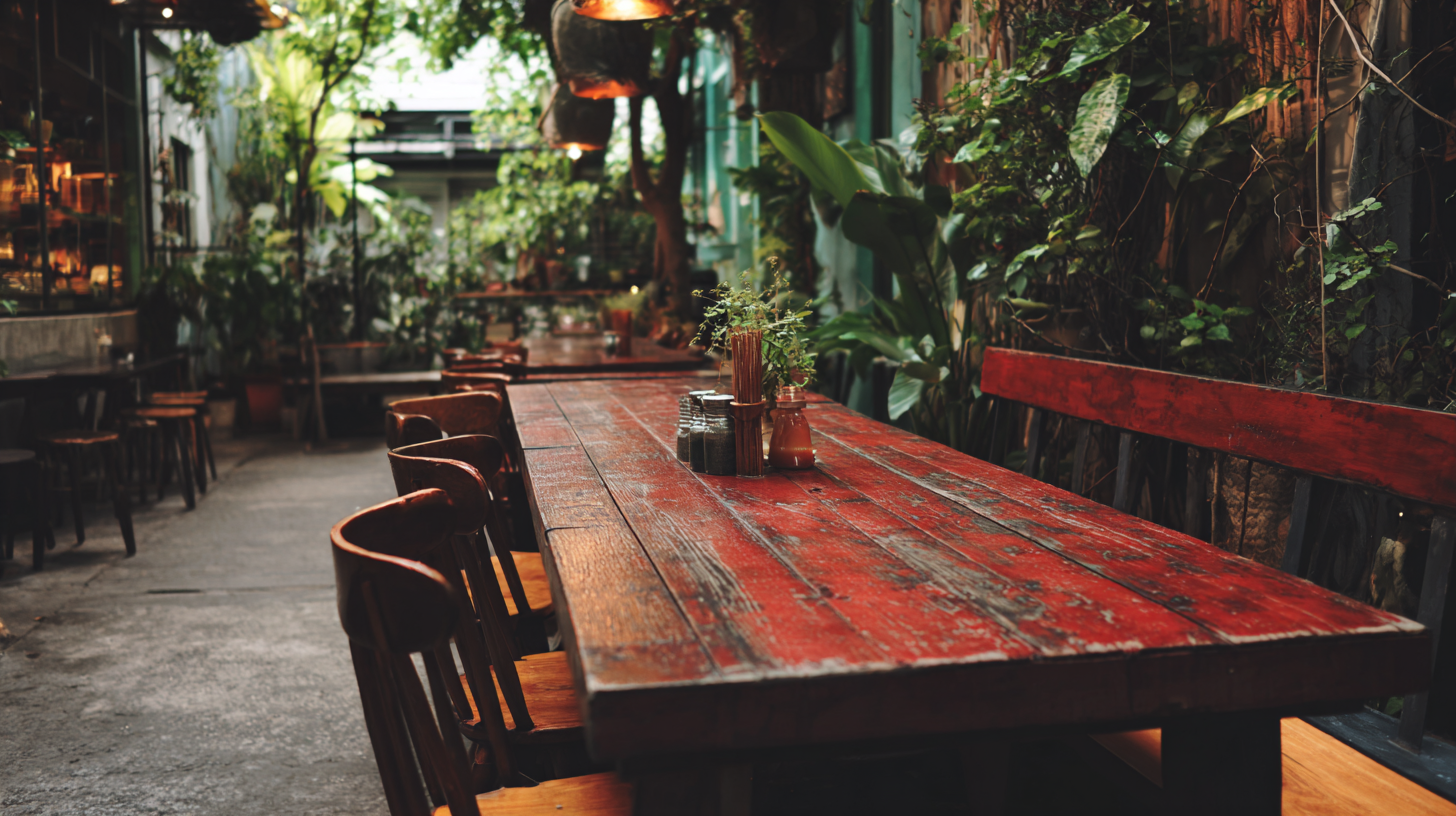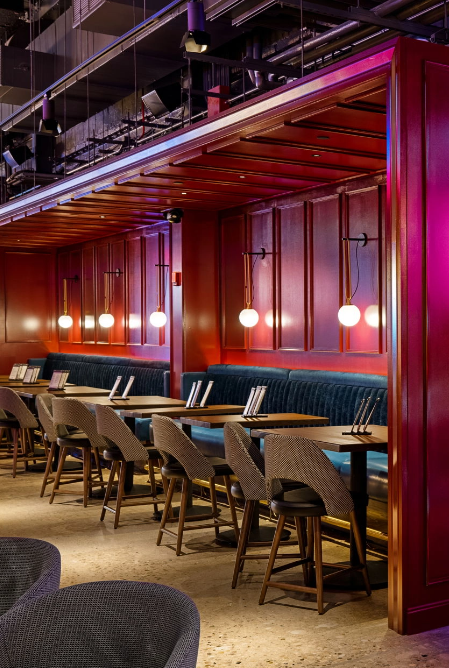In the competitive world of the restaurant industry, the choice of a Restaurant Seating Table is a crucial factor that can significantly influence the overall customer experience. This essential guide aims to navigate the complexities involved in selecting the right seating tables that not only enhance the aesthetic appeal of dining spaces but also provide comfort and functionality. As customers seek unique and memorable dining experiences, understanding the various types of seating tables, along with their respective materials and designs, is imperative.

Moreover, factors such as industry import and export certifications, as well as sustainable options, play a pivotal role in making informed purchasing decisions. By delving into these considerations, restaurateurs can optimize their dining environments, ensuring that each guest feels welcomed and valued, thereby driving customer satisfaction and loyalty.
When it comes to enhancing the customer experience in a restaurant, the choice of seating tables plays a crucial role. Different types of restaurant seating tables cater to various dining experiences, affecting everything from comfort to social interactions. According to a report by the National Restaurant Association, 70% of diners indicate that the ambiance of a restaurant is a major deciding factor in their choice to return. Therefore, selecting the right table type can significantly influence customer satisfaction and retention.
For casual dining settings, versatile options such as bistro tables and modular seating arrangements promote easy movement and accommodate larger groups, creating a relaxed environment. In contrast, fine dining establishments may benefit from larger, more elegant tables that facilitate intimate conversations and enhance the culinary experience. A survey from Statista suggests that 64% of customers prefer restaurants that have a diverse range of seating options, which allows for flexibility based on the occasion. By understanding the functionality and appeal of various seating tables, restaurateurs can tailor their environments to meet the needs of their clientele, ultimately leading to increased loyalty and higher sales.
When selecting restaurant tables, comfort and functionality are paramount to ensure an optimal customer experience. One of the key factors to consider is the height and size of the tables. It's essential to match table height with the seating to allow diners to sit comfortably without strain. Additionally, choosing an appropriate table size can influence the overall ambiance; smaller tables may foster intimacy, while larger ones can encourage socializing among groups.
Another critical consideration is the material of the tables. Durable, easy-to-clean surfaces are crucial in a bustling restaurant environment. Opting for materials like laminate, wood, or metal not only enhances the aesthetic appeal but also ensures longevity and resistance to spills and stains. Furthermore, incorporating flexibility in table arrangements allows for quick reconfiguration, accommodating various party sizes while maximizing space efficiency. Investing time in selecting the right tables can transform the dining experience, making it both inviting and practical for guests.
When selecting restaurant seating tables, the material quality and design play a pivotal role in enhancing the overall customer experience. According to a report by the National Restaurant Association, 60% of diners consider a restaurant's ambiance, heavily influenced by the furniture, when choosing where to eat. Tables made from durable materials like solid wood or metal not only withstand the rigors of daily use but also contribute to a restaurant’s aesthetic, which is crucial for customer retention.
Moreover, the design of the tables can directly impact customer comfort and social interaction. A study from the Journal of Hospitality & Tourism Research reveals that customers prefer tables that allow for adequate space between them and their neighbors, with 70% of respondents indicating that cramped seating significantly affects their dining experience. By investing in quality materials and thoughtful designs, restaurant owners can create an inviting atmosphere that encourages patrons to linger longer, ultimately boosting sales and improving customer satisfaction.
| Material | Design Style | Durability | Maintenance | Price Range |
|---|---|---|---|---|
| Wood | Rustic | High | Moderate | $200 - $400 |
| Metal | Industrial | Very High | Low | $150 - $350 |
| Plastic | Modern | Moderate | Very Low | $50 - $150 |
| Glass | Contemporary | Low | High | $300 - $600 |
| Composite | Versatile | High | Moderate | $100 - $250 |
When selecting restaurant seating tables, maximizing space utilization is crucial, especially in smaller dining areas. According to a report by the National Restaurant Association, nearly 60% of diners prefer environments that feel spacious and comfortable, emphasizing the importance of layout in customer satisfaction. For compact spaces, opting for round or square tables can enhance movement and flow, allowing for more flexible seating configurations. Foldable or extendable tables are also valuable for accommodating varying group sizes, ensuring no unused space when it’s not needed.

In larger dining areas, the arrangement of tables plays a pivotal role in maintaining an inviting atmosphere. A study by Restaurant Hospitality indicates that effective space planning can increase the number of covers by up to 20% without sacrificing comfort. Long communal tables can foster a sense of community, appealing to larger groups and creating a lively environment. Additionally, balancing high-top and traditional dining tables can cater to diverse customer preferences, optimizing both space and experience. Implementing these strategies not only enhances customer satisfaction but can also significantly boost a restaurant's revenue potential.
When selecting restaurant seating tables, integrating style and brand identity is paramount to creating an unforgettable dining experience. Your table choices should reflect your restaurant's theme and ambiance, from casual bistros to upscale dining establishments. For instance, a modern eatery may benefit from sleek, minimalist tables that convey sophistication, while a rustic farm-to-table restaurant might opt for reclaimed wood tables that echo its commitment to sustainability. Each style decision contributes to the overall narrative of your brand and helps create a cohesive environment for diners.
Moreover, color schemes and materials play a crucial role in enhancing brand identity. Tables in colors that align with your restaurant’s palette can reinforce your visual identity, evoking emotions and setting the tone for the dining experience. Metal finishes can impart an industrial feel, while softer fabrics and finishes can create warmth and comfort. Choosing the right table not only improves functionality but also serves as an essential touchpoint in communicating your restaurant’s unique story, ultimately enhancing customer satisfaction and loyalty.

©2024 Pine Vista LLC, DBA Design Manufacturing Group. All Rights Reserved.



©2024 Pine Vista LLC, DBA Design Manufacturing Group. All Rights Reserved.
